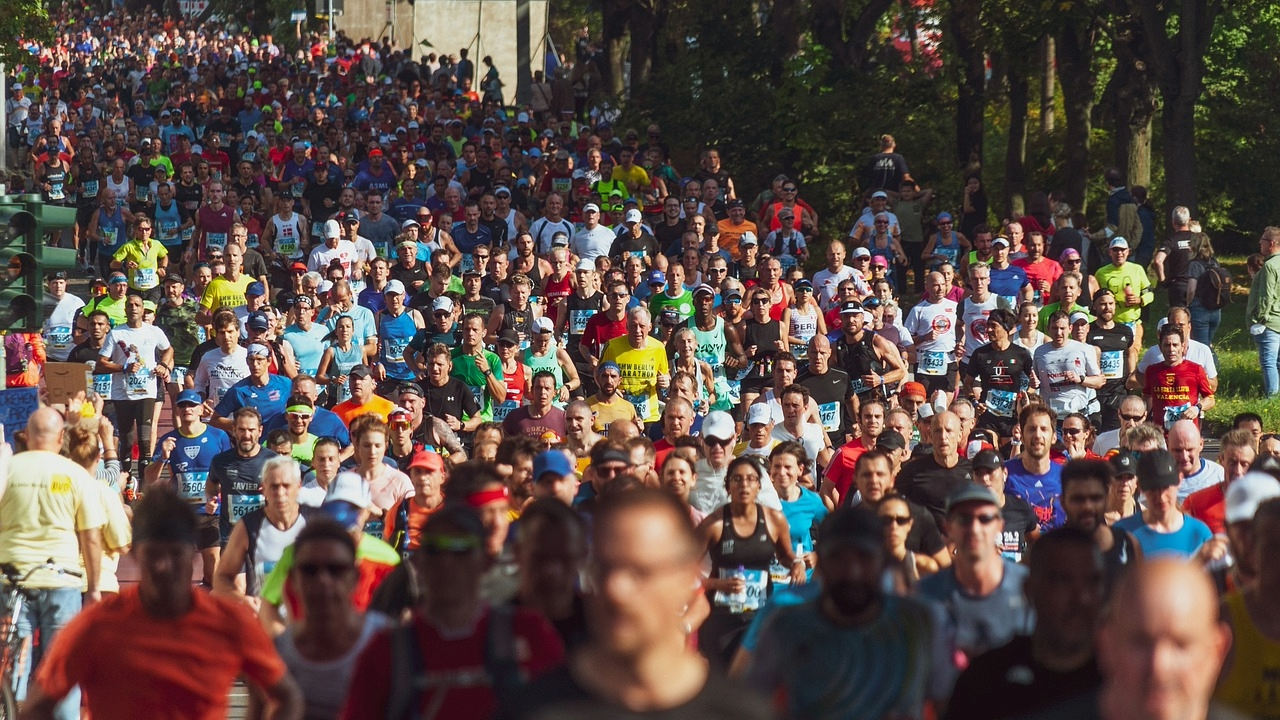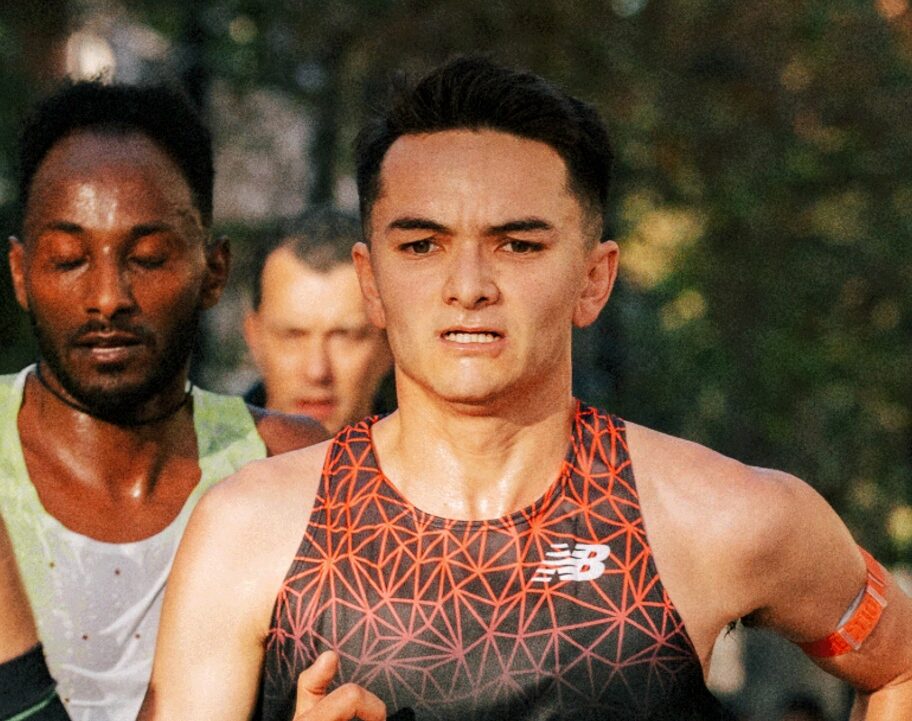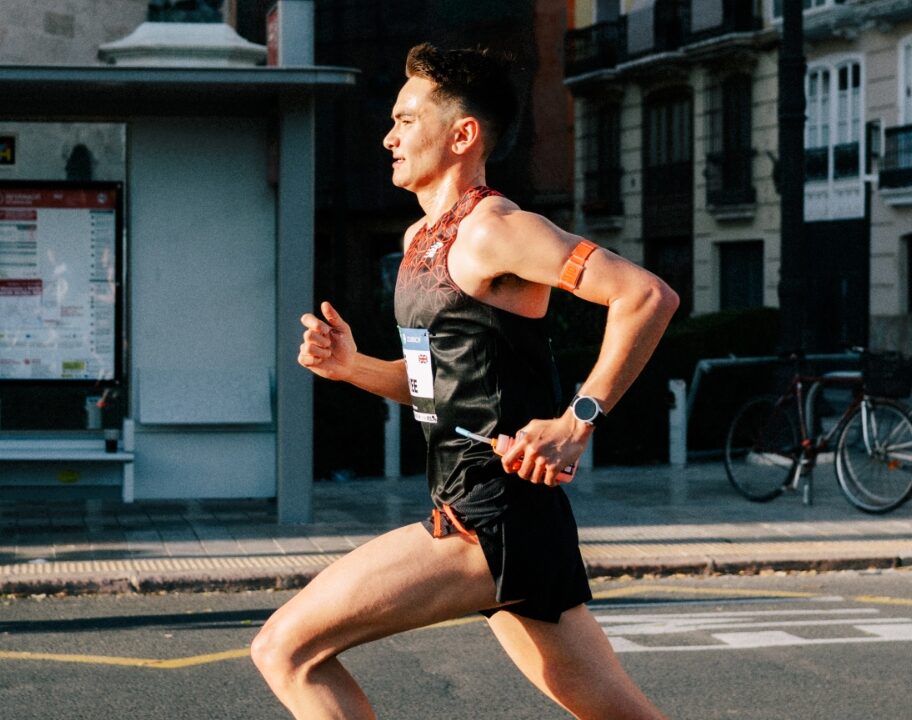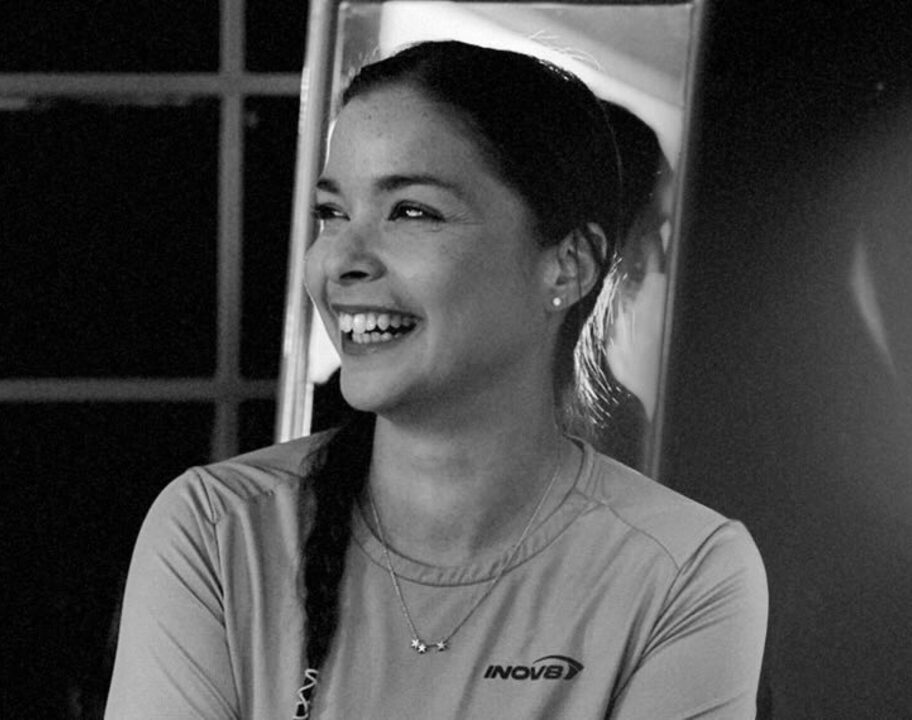Whether it’s a workout pace description or one of the very many stats your smart fitness watch bombards you with: if you’ve been running for a little while, it’s likely that at some stage you’ve come across the term ‘VO2 max’.
But what does VO2 max actually mean, and should you even care about it? With expert insights from a physiologist, we break down what VO2 max is, what it means for your running fitness and how to calculate yours. Plus, share some of our favourite run workouts to help boost your VO2 max and improve your run speed.
What is VO2 max?
VO2 max refers to the maximum amount of oxygen that your body is able to take up, transport and utilise during exercise. We express VO2 max as a number: maximum millilitres of oxygen per kilogram of bodyweight per minute (ml/kg/min). We can use VO2 max as a metric to quantify aerobic fitness. Though as Lucija Petrovic – physiologist at the Loughborough University Performance Lab – explains, VO2 max is more about indicating your endurance performance potential:
“[VO2 max] can be used as an indicator of endurance performance potential, although the lactate thresholds are more relevant predictors of your current performance capacity. VO2 max is largely determined by genetics, and in a highly-trained athlete is unlikely to improve much with further training.”
As Lucija has explained, there is a ceiling on your VO2 max determined by your genetics. But for most of us, we are far from hitting our potential. The higher your VO2 max, the better your aerobic fitness will be – and the more head room you will have to increase your thresholds. This is relevant for runners, where being able to push the pace while still working within your aerobic energy system will allow you to run faster, for longer.
Does boosting VO2 max improve your running?
Improving your VO2 max conditions your body to get better at utilising oxygen as efficiently as possible. At low-medium intensities, our body uses oxygen as its primary method of breaking down glycogen and turning it in adenosine triphosphate (ATP). ATP is the body’s energy ‘currency’ which enables your muscles to contract.

When your body gets better at utilising oxygen, you’ll be able to run for longer periods at higher paces before your body switches from its aerobic energy system to its anaerobic energy system. Lactate is always produced, to some extent, at any exercise intensity as a by-product of the breakdown of carbohydrates. But lactate is produced at a higher rate once we start working at an intensity which exceeds the rate at which oxygen can be utilised – i.e. once the body switches to the anaerobic energy system, and is forced to produce energy without using oxygen.
At this point, lactate is produced at a rate which exceeds your body’s ability to clear it. This means lactate along with hydrogen ions begin to accumulate in your blood, lowering the pH. This is where the term ‘lactic acid’ comes from. The accumulation of lactate creates the burning, fatigued sensation in your muscles which inhibits muscle function and forces you to slow down or stop.
Having a high VO2 max, means your body is able to utilise oxygen up to a higher intensity. Enabling you to run faster, before lactate starts to accumulate and you get that horrible burning legs feeling that forces you to ease up. Essentially, improving VO2 max means you can run faster, for longer.
How to calculate VO2 max
If you want the most accurate indication of your VO2 max, you’ll need to head into a lab setting to undergo testing. This involves running at progressively faster paces while wearing a mask which measures your oxygen uptake, and having blood lactate levels measured.
But for most amateurs, regular lab testing might not be feasible. You can however get an indication of your VO2 max outside of the lab. A simple method is to use the following calculation: 15 x [maximum heart rate divided by resting heart rate]. For example if your max heart rate is 180bpm and your resting heart rate is 48bpm, the equation would be 15 x (180/48). Learn more about finding your maximum heart rate here.
As your fitness increases, your resting heart rate will start to decrease because your cardiovascular system becomes more efficient. This in turn will give you a higher VO2 max score. Smart watches and fitness wearables are often equipped with technology to calculate your VO2 max, typically using the Firstbeat method which takes heart rate data and GPS/speed data to analyse how hard your body is having to work to achieve various paces, and uses this analysis to give you a VO2 max score.
VO2 max calculations outside of a lab setting are unlikely to ever be perfectly accurate. However they do give you a benchmark to be able to track a trend in your running fitness.
What is a good VO2 max? Good, average and exceptional VO2 max scores by age
A ‘good’ VO2 max varies by a number of factors, including age – a little bit like a ‘good for age’ marathon time. Below you can find the average, good and exceptional VO2 max scores by age and gender. This can give you an indication of how your aerobic fitness compares to your peers. Just remember, it’s less about comparing yourself to others, and more about tracking a trending in your own fitness.

| VO2 max by age – women | ||||
| Age Group | Average | Good | Very Good | Excellent |
| 20-24 | 37-41 | 42-46 | 47-51 | >51 |
| 25-29 | 36-40 | 41-44 | 45-49 | >49 |
| 30-34 | 34-37 | 38-42 | 43-47 | >46 |
| 35-39 | 32-35 | 36-40 | 41-44 | >44 |
| 40-44 | 30-33 | 34-37 | 38-41 | >41 |
| 45-49 | 28-31 | 32-35 | 36-38 | >38 |
| 50-54 | 26-29 | 30-32 | 33-36 | >36 |
| 55-59 | 24-27 | 28-30 | 31-33 | >33 |
| 60-65 | 22-24 | 25-27 | 28-30 | >30 |
| VO2 max by age – men | ||||
| Age Group | Average | Good | Very Good | Excellent |
| 20-24 | 44-50 | 51-56 | 57-62 | >62 |
| 25-29 | 43-48 | 49-53 | 54-59 | >59 |
| 30-34 | 41-45 | 46-51 | 52-56 | >56 |
| 35-39 | 39-43 | 44-48 | 49-54 | >54 |
| 40-44 | 36-41 | 42-46 | 47-51 | >51 |
| 45-49 | 35-39 | 40-43 | 44-48 | >48 |
| 50-54 | 33-36 | 37-41 | 42-46 | >46 |
| 55-59 | 31-34 | 35-39 | 40-43 | >43 |
| 60-65 | 29-32 | 33-36 | 37-40 | >40 |
How to improve your VO2 max
VO2 max is largely influenced by genetics. Elite-level endurance athletes will typically have a very high VO2 max, because they’re genetically pre-disposed to being ‘good’ at endurance sports. For amateurs, most of us won’t have hit the ceiling of our VO2 max yet. Therefore with targeted and specific training, we can improve our current VO2 max and get closer to reaching our athletic potential.
Zone 2 running
There are two parts of the puzzle when it comes to improving your VO2 max. The first is your steady, Zone 2 aerobic base work. Zone 2 running sets the ground work to allow you to complete the higher intensity interval work safely and effectively. It also helps to improve your aerobic efficiency and your ability to oxidise fat as a fuel source.
Check out our guide to running training zones to read more about the benefits of zone 2 running – and how to actually stay in zone 2.
Interval training
Alongside pushing your VO2 max up from below by ticking off the steady, zone 2 miles. Interval run workouts with efforts near your VO2 max can be highly effective at essentially forcing your body to put that improved aerobic efficiency into practice. Interval workouts will encourage your body to adapt to utilising oxygen more efficiently at higher paces, so you can sustain the effort.
If improving your VO2 max is the goal, it’s important to pace these intervals correctly so you’re working within the correct energy system. Using a six zone heart rate methodology, your VO2 max work should have you up in zone 6.
Example VO2 max interval run workouts
These workouts are going to feel pretty tough, so if you’re new to running or just getting back to it after some time off. It’s important to complete a block of training building up your aerobic endurance and strength so you can attack the higher intensity work without putting yourself at an increased risk of injury.
The idea of the following sessions is to build up the amount of time spent running at your VO2 max pace. Start off with 3 or 4 minute efforts, with the recovery time between reps matching the effort time. This will ensure that you can hit the target pace/heart rate throughout the workout. As your fitness improves you can progress the workouts. Start by reducing the recovery time. And once that starts to feel easy, increase the pace of the efforts and bump the recovery time back up.
WORKOUT 1: 5 X 4 MINS
This session is a good introduction to VO2 max work because you’ve got long recovery intervals between the efforts. You’ll spend a total of 20 minutes at VO2 max. If you don’t have a heart rate monitor, then aim for slightly faster than your 5km PB pace or a 9/10 effort
WARM UP: 10 MINS EASY JOG BUILDING UP TO STEADY PACE
MAIN SET: 5 X 4 MINUTES @ vo2 mAX (Z6, 95-100% MAX HEART RATE, 9/10 EFFORT) – 4 MINUTES EASY* BETWEEN EACH REP
COOL DOWN: 10 MINUTES, GRADUALLY REDUCING PACE DOWN TO A WALK FOR THE LAST 1-2 MINUTES
*At first, you may need to walk during the rest periods to recover enough between the repeats.
If this is your first time tackling run intervals, you could start with 3 x 4 minutes at effort pace and take 4 minutes of walking between each repeat. As your fitness improves, start by jogging the rest periods rather than walking. Then you can increase the number of repeats up to 4 or 5.
WORKOUT 2: 8 X 3 MINS
This workout is a progression from the 5 by 4 workout, suitable for experienced runners or as a follow on once 5 x 4 isn’t feeling like enough of a challenge.
WARM UP: 10 MINS EASY JOG BUILDING UP TO STEADY PACE
MAIN SET: 8 X 3 MINUTES @ vo2 mAX (Z6, 95-100% MAX HEART RATE, 9/10 EFFORT) – 2 MINUTES EASY* BETWEEN EACH REP
COOL DOWN: 10 MINUTES, GRADUALLY REDUCING PACE DOWN TO A WALK FOR THE LAST 1-2 MINUTES
*At first, you may need to walk during the rest periods to recover enough between the repeats.
The efforts are at the same intensity as workout 1 – around your 5km race pace or a 9/10 perceived exertion. The difference is an increase in the total time spent working at VO2 max, and reduced rest in between the intervals.
For both workouts, consider adding some cadence and form drills such as strides into the warm up to help you run with optimal form during the efforts.
A consistent block of training mixing in steady base miles alongside interval workouts and you should soon start to notice that you can begin to run a little faster on your endurance runs while maintaining a zone 2 heart rate. And an improvement in your race paces.
Head to our running training section for more training tips and advice to help you on your way to your next run PR.






